#Thermal Conductivity Materials
Explore tagged Tumblr posts
Text

Machine learning uncovers hidden heat transport mechanisms in organic semiconductors
Complex materials such as organic semiconductors or the microporous metal-organic frameworks known as MOFs are already being used for numerous applications such as OLED displays, solar cells, gas storage and water extraction. Nevertheless, they still harbor a few secrets. One of these has so far been a detailed understanding of how they transport thermal energy. Egbert Zojer's research team at the Institute of Solid State Physics at Graz University of Technology (TU Graz), in collaboration with colleagues from TU Vienna and the University of Cambridge, has now cracked this secret using the example of organic semiconductors, opening up new perspectives for the development of innovative materials with customized thermal properties. The team has published its findings in npj Computational Materials.
Read more.
#Materials Science#Science#Semiconductors#Organic materials#Heat flow#Machine learning#Temperature#Computational materials science#Metal organic frameworks#MOFs#TU Graz#Thermal conductivity
11 notes
·
View notes
Text
Global Thermal Conductive Polymer Material Market: Key Drivers, Challenges, and Opportunities
Increasing Demand for Heat Management in Electronics and Automotive Applications Fuels Growth in the Thermal Conductive Polymer Material Market.
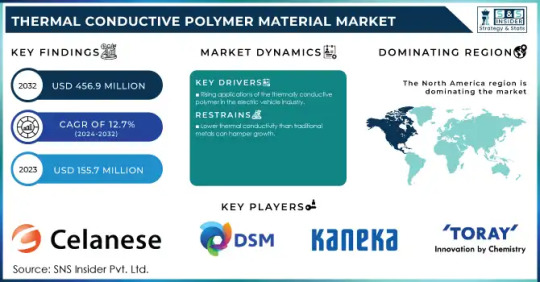
The Thermal Conductive Polymer Material Market size was USD 155.7 Million in 2023 and is expected to Reach USD 456.9 Million by 2032 and grow at a CAGR of 12.7% over the forecast period of 2024-2032.
The Thermal Conductive Polymer Material Market is driven by the increasing need for efficient heat dissipation solutions in high-performance applications such as electronics, automotive, aerospace, and LED lighting. These polymers offer a combination of thermal conductivity, lightweight properties, electrical insulation, and design flexibility, making them a preferred alternative to traditional metal-based thermal management materials. As industries move toward miniaturization and energy efficiency, the demand for advanced thermal conductive materials continues to rise.
Key Players:
Celanese Corporation
DSM
KANEKA CORPORATION
TORAY INDUSTRIES, INC.
SABIC
HELLA GmbH & Co.
MERCK KGaA
Saint-Gobain
Arkema
RTP Company
Future Scope & Emerging Trends:
Looking ahead, the market for thermal conductive polymer materials is set to grow rapidly, with a strong push from the electric vehicle (EV) industry, smart electronics, and 5G infrastructure. These sectors demand materials that not only manage heat effectively but also contribute to lightweight design and energy efficiency. An emerging trend is the integration of nanomaterials to enhance thermal conductivity while maintaining electrical insulation. Additionally, increasing environmental regulations are encouraging the development of recyclable and sustainable thermal polymers. As R&D efforts intensify, new product formulations with higher thermal performance and greater durability are expected to enter the market, opening new applications and use cases.
Key Points:
Rising demand for heat dissipation in compact, high-power devices.
Shift toward lightweight and electrically insulating materials in EVs and electronics.
Asia-Pacific leading the market due to rapid industrialization and electronics manufacturing.
Innovations in nanotechnology driving improved material performance.
Focus on eco-friendly, recyclable polymer solutions aligned with global sustainability goals.
Market expected to register a strong CAGR through 2030.
Conclusion:
The thermal conductive polymer material market is on a high-growth trajectory, driven by technological innovations, environmental considerations, and the evolving needs of high-performance industries. With rising applications in EVs, electronics, and renewable energy systems, the market presents vast opportunities for manufacturers, researchers, and investors. Strategic partnerships, product diversification, and sustainability-focused innovation will be key to long-term success in this dynamic market.
Read Full Report: https://www.snsinsider.com/reports/thermal-conductive-polymer-material-market-3243
Contact Us:
Jagney Dave — Vice President of Client Engagement
Phone: +1–315 636 4242 (US) | +44- 20 3290 5010 (UK)
#Thermal Conductive Polymer Material Market#Thermal Conductive Polymer Material Market Size#Thermal Conductive Polymer Material Market Share#Thermal Conductive Polymer Material Market Report#Thermal Conductive Polymer Material Market Forecast
0 notes
Text
We finally did it. We slipped the surly bonds of Earth to step among the stars. It took over two decades of research, billions of dollars of taxpayers money, and almost every country on the planet working in tandem, but after the International Space Coalition was founded it was almost effortless.
Faster than Light travel was accomplished almost on accident. Just the right ratios of radioactive material and an ‘ever so slight’ gravitational anomaly generator was all it took. To keep the population safe from any possible drawbacks, the first launch of the FTL drive, or Warp, was conducted at Tranquility Base on the moon. Either that was minimum safe distance or there wasn’t any, so it was decided to just roll the dice. The Angel was built there, the ship that would go further than any before it. The drive was set for Alpha Centauri, the big red button was pressed, and off they went, 300 crew members, going faster than anyone else in the history of mankind.
After 4 months, 319 ‘people’ came back. The extra 19 individuals wore special thermal suits to keep their body temperatures stable, and each had scaled skin with varying hues of greens and grays, with elongated prehensile tails. Their eyes were almost solid black, save for some red around the edges. Their hands were like a chameleon’s with only 3 fingers each. If it hadn’t been for a heads up from the Angel’s captain, the first words out of the welcoming party mouth would’ve been “they’re lizards!” Honestly the only thing they had in common with us was that they were bipedal.
Apparently the people of the ‘Alpha System’ as we called it, the Quintins, were just as surprised to see us as we were them. 2 ambassadors, 7 scientists, 10 military escorts, and a partridge in a pear tree came with them back to Earth. They just had to see it, after hearing stories of home from the crew aboard The Angel. They had to see how a world so full of dangers, from predators to the sheer deadly climates, could have allowed such a species as humans to exist let alone thrive and advance far enough to get off the ground.
The surprises didn’t stop there either, as if finding out WE ARE NOT ALONE wasn’t a big enough shock to the human race. The Quintins weren’t the only species out there, they were in fact only one people in a collective, a Grand Assembly of Intelligent Lifeforms (it sounded longer in Quin tongue but they brought auto translators) or The GAIL, and the Human race was immediately eligible for probational membership. Developing the WARP capabilities was what sealed it. Faster than Light travel was the first prerequisite for joining the GAIL. The second was a planetary inspection, and since the Quintins were our first contact, who better? It was time to meet the neighbors for the human race.
That was 50 years ago. Now the Human Race were full fledged members of The GAIL, and the International Space Coalition was renamed into simply the Terran Academy, putting out graduates of every field imaginable. We had an entire fleet of WARP enabled ships, spreading human explorers into the depths of space.
The only problem these days were the rumors. 50 years of interaction with alien species had made one thing clear to the rest of the universe at large:
Their planet is completely unstable
Their bodies are unimaginably fragile while simultaneously unbreakable
They claim not to have a hive mind but nobody believes that for a second
They seem to ‘pack bond’ outside their own species
They’ll eat anything (maybe even you)
The Humans make no sense
THE HUMANS ARE DEATHWORLDERS!
AND HERE THEY COME!
(This will be an account of various humans and their travels through the known universe. Earth, also known as E24, is a terrifying deathworld. This should be fun)
#deathworlders of e24#earth is space australia#humans are weird#humans are space australians#humans are deathworlders#humans are space orcs#humans are space oddities#humans are insane#humans are strange#humans are terrifying#humans are cute#humans are space fae#aliens#original story#writing
752 notes
·
View notes
Text
Good News - May 15-21
Like these weekly compilations? Support me on Ko-fi! Also, if you tip me on Ko-fi, at the end of the month I'll send you a link to all of the articles I found but didn't use each week - almost double the content!
1. Translocation of 2,000 rhinos in Africa gets underway in “one of the most audacious conservation efforts of modern times”
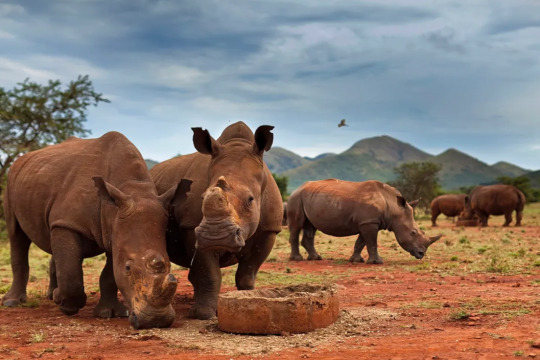
“The 2,000 rhinos - more than are currently found in any single wild location in Africa - represent around 12-15% of the continent’s remaining white rhino population. […] “Rhinos perform an important ecological function in the environment as a large grazing herbivore,” says Dale Wepener[….] “The protection of rhino is far more than just looking after rhino; other species that occur in the protected areas will benefit from the protection,” explains Jooste. “This will lead to an increase in diversity and result in much healthier ecosystems.”
2. Florida Corridor Buffers Effects of Climate Change on Wildlife — And People
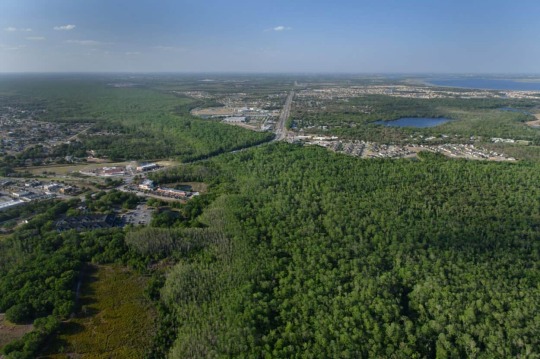
“A massive multi-partner effort that has conserved 10 million acres for wildlife in Florida over past decades will help buffer wildlife—and people—from the effects of climate change, a new report says. […] Protecting these corridors is important for wildlife genetics, demography and connectivity […], conducting prescribed fires in the corridor can reduce the risk of more intense wildfires [… and] they can provide buffers against hurricanes and seasonal thunderstorms.”
3. Global life expectancy to increase by nearly 5 years by 2050 despite geopolitical, metabolic, and environmental threats
“Increases are expected to be largest in countries where life expectancy is lower, contributing to a convergence of increased life expectancy across geographies. The trend is largely driven by public health measures that have prevented and improved survival rates from cardiovascular diseases, COVID-19, and a range of communicable, maternal, neonatal, and nutritional diseases (CMNNs).”
4. Valencia has Spain’s longest urban park

“Jardin del Turia (Turia Garden) is the green spine of the City of Valencia and Spain’s (and possibly Europe’s) longest urban park stretching for a length of 8.5 kilometres [… and] the current administration plans to make Jardin del Turia Europe’s largest city green space by extending it to the sea[….] Almost all Valencia residents (97 per cent) live within 300 metres of an urban green space. […] Jardin del Turia is a true urban oasis that provides exceptional thermal comfort, with a temperature difference of up to three degrees compared to other areas of the city.”
5. This Paint Could Clean Both Itself and the Air
“When an artificial ultraviolet light source shines on [photocatalytic] paint, the nanoparticles react with pollutants to make them break down—theoretically removing them from the nearby air and preventing a discoloring buildup. [… R]esearchers developed a new photocatalytic paint that they claim works using UV rays from ordinary sunlight, making its self-cleaning properties easier to activate. They’ve also shown that they can effectively produce this paint from recycled materials [including fallen leaves].”
6. Planting Seedlings for a Cooler Rockingham
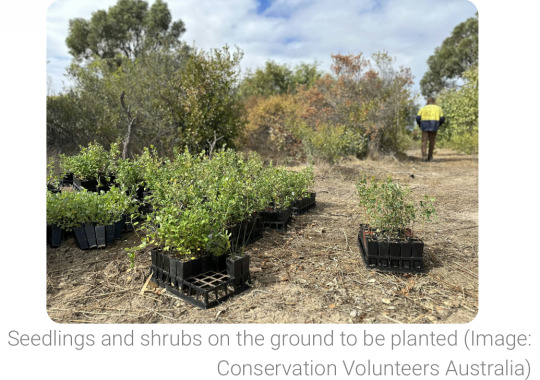
“A dedicated group of volunteers recently planted over a thousand native seedlings in Lewington Reserve [… and] re-established canopy cover to areas of the reserve to create cooling shade for the local community and provide homes for native wildlife. […] Planting lots of trees and shrubs in urban areas can help create shade and cool cities, mitigating the impacts of climate change, contributing to biodiversity conservation and building greener, more resilient communities.”
7. Sydney’s first dedicated affordable housing for trans women designed to deliver ‘positive outcomes’

“Community housing provider and charity Common Equity NSW, […] which is for people on very low to moderate incomes, prides itself on creating inclusive living and promotes the independence and well-being of people and communities […, and] will deliver the first-of-its-kind social housing in a bid to provide a safe place to live for transgender women seeking an affordable home.”
8. Rewilding: How a herd of bison reintroduced to Romania is helping ‘supercharge’ carbon removal

“170 European Bison reintroduced to Romania’s Țarcu mountains could help capture and store the carbon released by up to 84,000 average US petrol cars each year. […] By grazing a 48 square kilometre area of grassland in a wider landscape of 300 kilometres squared, they helped to capture an additional 54,000 tonnes of carbon each year. That is around 10 times the amount that would be captured by the ecosystem without the bison.”
9. World’s biggest grids could be powered by renewables, with little or no storage
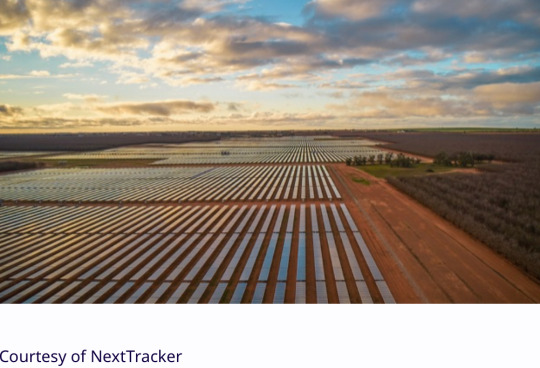
“[…] 100% renewable supply can then match the load by putting surplus electricity into two kinds of distributed storage worth that [an energy expert] says are worth buying anyway – ice-storage air-conditioning and smart bidirectional charging of electric cars, and recover that energy when needed, filling the last gaps with unobtrusively flexible demand.”
10. Supporting the Long-Term Survival of Copper River Salmon and Alaska Native Traditions
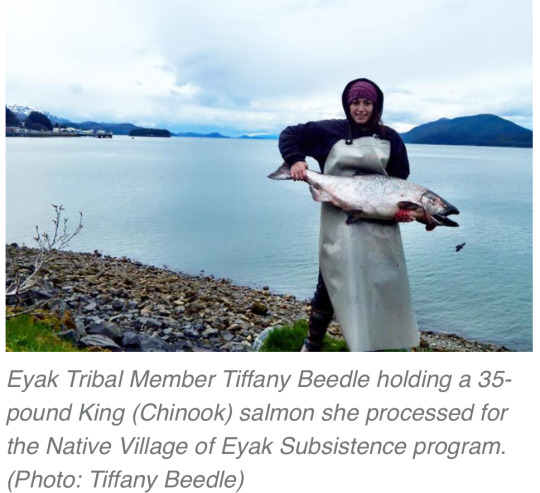
“With $4.3 million in NOAA funds, the Copper River Watershed Project and The Eyak Corporation will remove fish passage barriers, opening more streams for salmon spawning and subsistence fishing. [… As part of this effort, o]ld narrow culverts that constrict water flow will be replaced with “stream simulation” culverts wide enough to fit the full stream, including its banks. They are also deep to allow contractors to place stones and other material inside to mimic a natural stream bottom.”
May 8-14 news here | (all credit for images and written material can be found at the source linked; I don’t claim credit for anything but curating.)
#hopepunk#good news#rhino#white rhino#africa#conservation#rewilding#climate change#florida#wildlife#life expectancy#health#spain#green space#urban parks#recycling#trees#global warming#trans#affordable housing#australia#bison#romania#carbon#carbon capture#renewableenergy#reforestation#salmon#alaska native#nature
390 notes
·
View notes
Text
Components autism post because I had thoughts
Joule — Sensory seeking. The "animal sensuality" comes from her need to FEEL or else she explodes. She also explodes if she feels too much, but that is hard to happen and if it does at least two people die. Has NO filter, just let's atrocities fall out of her mouth because she doesn't really overthink about how everything that everyone says is gently curated based on the receptor's possible reactions. Is the one who has the most fights with Electra for that reason.
Volta — Sensory seeking and avoidant. Despite being a freezer truck she LOVES being warm, and cuddles up to anything that is warm, mostly Joule. Would hiss at the feeling of snow being squished in her hands and the sound that it makes, is often the one to tell Purse to shut up (she does it nicely so it doesn't hurt his feelings). Finds the way energy is conducted extremely interesting, and could ramble about how different types of thermal insulation work for a lot more time than expected.
Wrench — Sensory avoidant, except for when it comes to touch. If it's sound, she likes it minimum, if it's light, she likes it low. But loves everything that she can touch, adores different textures and materials, which comes really handy due to the fact that she has to deal with the different materials that make the Electrics work, and could probably recognize the different parts from touch alone. Along with the material touching thing, she can't take a hint if it's just a hint. Words need to be direct with her or else she'll just pretend to understand after three tries.
Krupp — Sensory seeking. There's a reason he loves spinning. Has an extensive ritual for safety that he NEEDS to do every single night or else he feels like he is risking his, Electra's and everyone else's lives. His love language is standing around and body doubling. Most of the time he is just... There. Standing menacingly, but he's doing his job.
Purse — Sensory seeking. Has an entire collection of different currencies, and knows (mostly) everything about them. Ask him how much a million Lira is, he will know as soon as you give him a pen and paper. Speaking of pen and paper, he cannot leave anywhere without those two items — His notepad is filled with math problems that he either created for himself to pass the time or that were actually given to him, often by Electra. Can be lured into the back of a van with the multiplication table and a few problems relating to it. Also gets extremely obsessive over sounds and visuals — Stims by clicking his tongue, spinning coins around, simply adores the little details that bills have to prevent counterfeit money from going around, echolalia and palilalia is extremely common for him, can imitate the sound of a coin hitting the bottom of a container perfectly from doing it over and over again. Also a people pleaser, so if someone tells his to shut up he goes "SIR YES SIR" and stays still for, like, ten seconds before leaving before he explodes with leftover energy. Also overthinks all of his dialogue and plans for the multiple different reactions his receptor could have depending on how he words things. Love this little guy
#starlight express#purse the money truck#my darling PURSE 🙏#can y'all guess who is ME❤️❤️#krupp the armaments truck#volta the freezer truck#joule the dynamite truck#wrench the repair truck#stex components#stex#stex headcanons#also. I'm autistic if you couldn't tell
43 notes
·
View notes
Text
Wordplay Wednesday: Metal
Today we are going to talk about the word metal. Now, this may seem silly, if I say the word metal, I bet a few come to mind: gold,

silver,

iron,

but what makes something a metal?
A metal is a solid material that is typically hard, shiny, malleable, fusible, and ductile, with good electrical and thermal conductivity. Metals can be chemical elements like the ones I mentioned earlier, alloys like brass

or steel

or a molecular compound like silver nitrate.

Most metals have a shiny, metallic luster when polished or fractured and most are opaque. Metals tend to be more dense than nonmetals but that density varies widely between different types.
There are several groups of metals. Alkali metals are highly reactive metals with low melting points and are so soft they can be cut with a knife. These includes Lithium, sodium and potassium.

Alkaline earth metals are a little less reactive, harder and have a higher melting point than alkali metals. Due to their reactivity, they seldom appear in their pure form. Metals in this group include calcium, barium and magnesium.

Transition metals are what we traditionally think of as metals. They are hard, strong, shiny and easy to shape. This group includes gold, iron, and platinum.

Post-transition metals are fairly soft with low boiling points. This group includes aluminum, tin and bismuth.

Finally, we have noble metals. This group is pure and nonreactive so they don’t form compounds. This makes them perfect for jewelry and coins. This group includes copper, silver and rhodium. (You'll notice those are all transition metals).

Tune in tomorrow to learn about a chemist who made a huge difference in being able to categorize metals and their neighbors. Fossilize you later!

#fun facts#geology#science#science education#mineralogy#precious metals#metals#periodic table of elements#alkali metals#alkaline earth metals#transition metals#science terminology#science side of tumblr
14 notes
·
View notes
Note
Wow! Reading about your whale suit project is truly inspiring! I can relate to it in a way, in the sense that I wish so dearly that I could return to the woods. I have mobility issues too that make it impossible for me to do so. I hope so much that you are able to achieve your dream, or at least get to partially return to the water.
Thanks friend, I hope very much I can return to the water. I do think I can. In a way being a whale I am quite lucky. I cannot well walk on the land and walk with forearm crutches, but in the water I could move freely and it is wonderful. I also think in a way, taking a human body and forcing it back into a cetacean shape is easier than for most other animals.
We are immersed in water which does make certain aspects like food intake and air intake difficult, it makes a lot of others things easier. Water has a much higher heat capacity and greater conductivity than air. Wearing a shirt in 16-18 degree air is plenty warm enough, but in 16 degree water you are really recommended a wetsuit. But this means we have much more ability to pad ourselves out with material to form our shape better. We can have 10 or more cm of thickness, and can still function perfectly fine thermally. But also being sea creatures our body and all that extra weight is supported by the silicone. I will be around 300-360kg once fixed and am currently around 90kg (and an 'ideal' weight for me is around 65kg). In the sea it is a lot to move around, but in the end it is mostly just additional inertia. But on land, that amount of weight would be unmanageable.
Additionally, the shape of a cetacean body is actually quite manageable for a human body. I imagine if you have looked at my profile you have seen this image.

This concept drawing what I would look like is drawn around my own body. There are some differences to a standard minke body, but unless you knew a lot about whales, you really might not notice. The main things are a slightly higher fineness ratio, and much larger flippers (and the fact that I will be perpetually the size of a month old calf). But if you are not someone who has a pretty significant interest in marine biology and cetaceans, you probably aren't terribly likely to know what a minke whale is, let along that my flippers are bigger than they should be.
Human bodies conform pretty well to a cetacean shape, we have arms that become flippers, and legs that become our tails. Compared to many other creatures our bodies bend in the right way and we do not have a huge amount of additional movement we could not generate from our own bodies. In addition some of the strongest muscles in our backs and buttocks are used to hold up our torsos, in this configuration instead they become our tail following more or less that same motion fully motile humans use all the time. And indeed there are even sports which functionally do this namely mermaiding and finswimming/freediving.
Compare this to trying to make a canid body (just because they are the most easily abundant and my companion is a canid). Covering yourself in fur would be hot in a lot of climates, your back legs would be much longer than your front legs, your torso would be too short, nothing could control your ears or tail, your body would struggle to support the weight in this hunched over position, and with the shape of the neck some additional headpiece would be needed which would have to be supported by the user (which is true for myself as well, but I can use the water to hold myself and the necks of mysticetes at least are fixed).
The things that were done to us were terrible, but in a way, I am quite lucky as I can really see a path forward for fixing a cetacean body, that would be very difficult with most other animals. And I do really believe that someday, I will swim again, I will swim free, and swim forever.
16 notes
·
View notes
Text
Unicorn Fun Facts
Unicorns aren't horses. They're even-toed ungulates, and have their own family within the ruminants. Most studies place them closer to bovids, deer, and chevrotains than to giraffes or pronghorns but there's not a consensus on what their closest relatives are. So they're goat-antelope-deer things that superficially resemble horses in some ways. Most unicorn species are also a lot more lightly built than wild equines: you only think unicorns look horselike because you're comparing them to domestic horse breeds that aren't as stocky as their wild ancestors.
Unicorn horns have a keratinous sheath similar to bovids, with a permanent bone core, but the sheath is periodically shed and regrown, similar to pronghorns.
You've probably heard the factoid that unicorn horns make lousy weapons because they're too fragile to really gore something with and the angle they attach to the skull means if the animal charged something with the horn outstretched it would break its own neck. You might have also heard that they're only used for display and ritualized "wrestling" between males. Let's clear this up: a unicorn's horn is absolutely a weapon, it's just not a melee weapon. It's not attached at a good angle for goring enemies because that's not how it's used.
Unicorns have one of the largest binocular vision ranges of any ungulate, and have exceptionally sharp eyesight. They also have a third eyelid, or nictitating membrane, which can close in only a few milliseconds and is darker than a pair of welding goggles.
Have you ever seen a unicorn put its horn in a pool of water before drinking? They do this to purify it. Have you seen the discharge of blue light when it does that? That light is a little something called Cherenkov Radiation.
No, unicorns aren't radioactive. Their primary magical power is ionizing things. "Bu-bu-don't Qilins have electrical powers?" Yes. Qilins can use lightning because they build up a massive electrical charge around their horns, and then create a channel of ionized air to conduct that charge into a target. You may have noticed that most creatures that use electricity as a weapon can only produce an electric shock, not something that's a fucking arc flash hazard.
Anyway, true unicorns are more dangerous. The magical field generated by the horn rips molecules apart and acts like a particle accelerator, flinging the electrons out at up to 90% of the speed of light. As scary as this sounds it's not the really dangerous part. The really dangerous part is that they can project a beam of unbelievably hot plasma several tens of meters in front of the horn. This can bore into a target but more commonly the unicorn rapidly sweeps its head from side to side. Anything solid in the path of the beam is subject to very rapid thermal ablation. The beam's actually pretty thin, but it puts out so much light that it washes out camera sensors. This light looks blue-white to human eyes but it's mostly ultraviolet, as well as a lot of X-rays which are mostly generated by the high-energy particles hitting stuff.
This attack does not just inflict burns: it gouges a trail of charred and/or vaporized material surrounded by severe burns. Depending on the range, the amount of power, and the speed the beam travels across the target it can cut several centimeters into living tissue. This is just the depth where the tissue is gone or reduced to charcoal: the burns extend deeper than that. It is also entirely possible for the attack to penetrate a body cavity and vaporize the fluid inside into a blast of superheated steam that severely burns the entire surface of that cavity, or in severe cases produce enough pressure to disrupt the victim. There are records of unicorns hitting a horse at point blank range and literally blowing half its torso apart.
The third eyelid exists to protect the unicorn's eyes from the blinding flash its powers produce. The horn's keratin sheath is shed and regrown because it functions as an ablative. The European Straight-Horned Unicorn sheds its horn sheath approximately every month. Newly grown sheaths are silvery white, but if a unicorn has had to use its powers the surface of the horn will be charred and blackened.
Yes, unicorns can purify water... by irradiating it. This kills pathogens very effectively, but be careful: it doesn't get rid of chemical contaminants. It also doesn't purify a whole lake, just the immediate area the unicorn is about to drink from. This is why unicorns often prefer to drink from still water: in running water the current will carry away the water they just cleaned.
Unicorns also really do have very potent healing magic. One thing it's extremely good at is curing cancers. This is a secondary adaptation to keep unicorns from killing themselves with their own magic.
Anyway yeah, male unicorns fence with their horns because their magic is too devastating to use in competition for mates.
Unicorns are actually pretty chill for mid-sized herbivores, especially in groups, not despite but because of their magic. Usually herbivores are on a hair trigger of running for their lives or murdering anything that might be a predator. Unicorns' docility is born of the confidence of a creature that extolls death with the blinding light of a dying star, and can also bail its friends out with its healing powers. Even dragons don't mess with them unless they're really desperate.
While unicorns are a rare and protected species now, hunting and habitat loss didn't start to noticeably deplete their numbers until the 18th and early 19th centuries, at least in Europe. Why? Because humans didn't have weapons that could hit from beyond a unicorn's effective range with enough power and accuracy to reliably instantly kill one until the rifle. Hunting unicorns with horses, spears, and packs of dogs is an activity that's pretty much guaranteed to kill several people even if you corner and exhaust a lone individual. Even in modern times they're notorious for killing would-be poachers.
There are a few unicorns in captivity at dedicated research-based sanctuaries, but the more powerful species are never seen in zoos. The reason is that they can very easily kill, maim, or blind you from the other side of a fence, the only way of making a unicorn enclosure truly "safe" would be a ridiculously wide buffer zone around the enclosure that would take up a huge amount of space. Only trained professionals should be going anywhere near a unicorn.
11 notes
·
View notes
Text
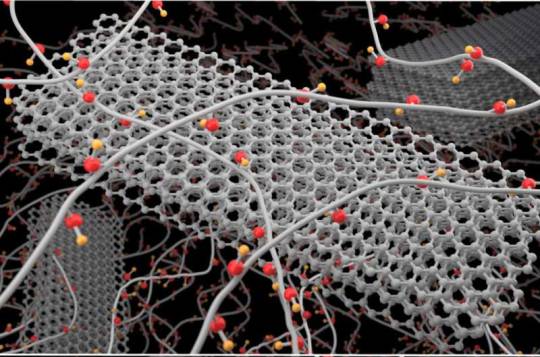
Polymers with flawed fillers boost heat transfer in plastics, study reveals
In the quest to design the next generation of materials for modern devices—ones that are lightweight, flexible and excellent at dissipating heat—a team of researchers led by the University of Massachusetts Amherst made a discovery: imperfection has its upsides. This research, published in Science Advances, experimentally and theoretically found that polymers (commonly referred to as plastics) made with thermally conductive fillers containing defects performed 160% better than those with perfect fillers. This counterintuitive finding challenges long-held assumptions that defects compromise material performance. Instead, it points to a promising new strategy for engineering polymer composites with ultrahigh thermal conductivity. The study was led by UMass Amherst with collaborators from Massachusetts Institute of Technology, North Carolina State University, Stanford University, Oak Ridge National Laboratory, Argonne National Laboratory and Rice University.
Read more.
#Materials Science#Science#Polymers#Heat flow#Plastics#Temperature#Thermal conductivity#Defects#Composites#Interfaces#University of Massachusetts
9 notes
·
View notes
Text
Global Thermal Conductive Polymer Material Market: Key Drivers, Challenges, and Opportunities
Increasing Demand for Heat Management in Electronics and Automotive Applications Fuels Growth in the Thermal Conductive Polymer Material Market.

The Thermal Conductive Polymer Material Market size was USD 155.7 Million in 2023 and is expected to Reach USD 456.9 Million by 2032 and grow at a CAGR of 12.7% over the forecast period of 2024-2032.
The Thermal Conductive Polymer Material Market is driven by the increasing need for efficient heat dissipation solutions in high-performance applications such as electronics, automotive, aerospace, and LED lighting. These polymers offer a combination of thermal conductivity, lightweight properties, electrical insulation, and design flexibility, making them a preferred alternative to traditional metal-based thermal management materials. As industries move toward miniaturization and energy efficiency, the demand for advanced thermal conductive materials continues to rise.
Key Players:
Celanese Corporation
DSM
KANEKA CORPORATION
TORAY INDUSTRIES, INC.
SABIC
HELLA GmbH & Co.
MERCK KGaA
Saint-Gobain
Arkema
RTP Company
Future Scope & Emerging Trends:
Looking ahead, the market for thermal conductive polymer materials is set to grow rapidly, with a strong push from the electric vehicle (EV) industry, smart electronics, and 5G infrastructure. These sectors demand materials that not only manage heat effectively but also contribute to lightweight design and energy efficiency. An emerging trend is the integration of nanomaterials to enhance thermal conductivity while maintaining electrical insulation. Additionally, increasing environmental regulations are encouraging the development of recyclable and sustainable thermal polymers. As R&D efforts intensify, new product formulations with higher thermal performance and greater durability are expected to enter the market, opening new applications and use cases.
Key Points:
Rising demand for heat dissipation in compact, high-power devices.
Shift toward lightweight and electrically insulating materials in EVs and electronics.
Asia-Pacific leading the market due to rapid industrialization and electronics manufacturing.
Innovations in nanotechnology driving improved material performance.
Focus on eco-friendly, recyclable polymer solutions aligned with global sustainability goals.
Market expected to register a strong CAGR through 2030.
Conclusion:
The thermal conductive polymer material market is on a high-growth trajectory, driven by technological innovations, environmental considerations, and the evolving needs of high-performance industries. With rising applications in EVs, electronics, and renewable energy systems, the market presents vast opportunities for manufacturers, researchers, and investors. Strategic partnerships, product diversification, and sustainability-focused innovation will be key to long-term success in this dynamic market.
Read Full Report: https://www.snsinsider.com/reports/thermal-conductive-polymer-material-market-3243
Contact Us:
Jagney Dave — Vice President of Client Engagement
Phone: +1–315 636 4242 (US) | +44- 20 3290 5010 (UK)
#Thermal Conductive Polymer Material Market#Thermal Conductive Polymer Material Market Size#Thermal Conductive Polymer Material Market Share#Thermal Conductive Polymer Material Market Report#Thermal Conductive Polymer Material Market Forecast
0 notes
Text
Yin Yang Generality (Part 1/2)

My goal was initially to talk about the Yin/Yang concept in Naruto, but I realise I have first to explain a little bit what I mean by that so we're all in the same page. kudos to @shisui-uchiha-rp for inspiring me this double post.
Disclaimer : Usually people reading me are quite smart but who knows some people don't get use to my style. There is no meliorative or derogative values behind Yin/Yang or Female/masculine if you feel that one is better than the other. IT'S ON YOU. The author is not your mum, not your therapist, not your teddy bear to vent upon. If you don't feel comfortable and triggered here are my solutions : move on from my post, unfollow, or even block. But if you're high IQ, open minded, not self-centred or just generally curious and well-behaved then welcome and keep reading.
The duality is probably one of the oldest concept in metaphysic. It's presented in many cosmologies to explain the origin of the world. After the Unicity or primordial chaos comes the duality of opposite forces: Positive/Negative Light/Darkness, Up/Down, Heaven/Earth. A bit like the cells division in biology. You don't go from 1 to 8. You go first 1 splitting in 2 splitting in 4 splitting in 8... So duality is the matrice of any system. It's the fundamental for the law of nature, the balance in the universe and its complex beauty. It's not Yin against Yang, or Yin>Yang or Yang>Ying. It's about how Yin and Yang balance each other to create stability, order and peace.
What's Yang?

I like to represent it as a centrifugal force. A cyclonic energy expanding outside of itself. And by expanding , it takes place and when you take place, it grows. You create motions and frictions that create disruption and may lead to violence. Going outside can also means transcending an initial state. Looking for answer outside of oneself. Exploration of the unknown. To pierce and penetrate others. You've probably heard that sky crappers or obelisks are sometimes referred as phallic symbol, it's due to their shape that represent the will to project power vertically out and above others. Being the number one. The process of individuation, ego, independence, but in positive way, being able to assert one's will and not fearing judgement.
Yang is often associated with light because it's also acting in the open, unmasked, direct and loud language, explosive presence, rational.
An other thing coming to my mind, Yang energy is like an arrow or a missile going straight to the point.
In the negative, it can also being associate with escapism, distance, scattering when the ambition goes to far, separation, division, detachment, dryness. Ultraviolence, megalomania, destruction.
What's Yin?

The opposite is the centripetal force. Think about a spinning vortex, a black hole. Or just water whirling in your sink. The centripetal motion brings both the idea of cycle and gravity and when you extend the move to its maximum, the centre reaches immobility. And if you go even further you have high pressure exerts on a small spot.
In nature, do you know what's happened when carbon is submit to an extreme pressure in the depth of Earth's mantle? It crystallises into a diamond. And the diamond's attribute, except its beauty, has the highest hardness and thermal conductivity of any natural material. It's indestructible. It facilitates vibration. It's solid!
Hence why someone known for an extreme mastery of Yin energy is said to be intense. Because the spiritual core of this person is so strong, that the mere presence into a room is enough to create "gravity" toward them. It doesn't matter if the person is attractive or not, good or mean. Yet they have this thing...this magnetic charisma that hypnotises people.
Yin energy refers to obscurity, what is hidden, invisible, cold, passive, receptive, and wet. Observe again nature : a DNA nucleus, the pit of a fruit, seed, or the star in a solar system is the most important part. It's the roots. the raw material from whom everything else proceed and rotate. It is extremely powerful because it contains all potentials.
Something you can't see always seem more powerful and menacing that something that you can observe and measure. Imagination is always infinite compare to reality and its limitation. For instance : there is a lion in front of you, you might have a tiny chance to survive if you run away. But if I tell you there is a lion...somewhere around you. It seems suddenly the animal is everywhere and you can't prepare yourself from something you can't see. The paranoia will imagine that the slightest wind is the beast ready to jump on your throat. But maybe it's not true, maybe the lion doesn't exist at all and yet in your imagination it was very real!
Contrary to Yang which is direct and straight. Yin is curvy, suggestive, indirect, like a fog, slow like a sugar soaked by water. We can call it the boiling frog method. You slowly raise the temperature so nobody notice. When it starts to be too hot it's too late, the frog has been weakened for hours and don't have the strength anymore to escape the trap. In a Yang manner, if it has been directly from room temperature to 100°C, it would have jumped out immediately.
In negative a bad Yin can create obsession, brooding over and over the same thing. A sensation of inertia, mental instability, self-destruction. Implosion when the core is falling into itself due to too much external pressure or internal fragility. Narcissism and not being able to see the bigger picture outside of oneself. Also manipulation, lies, victimhood mentality, passivity to act, delusion.
Yin/Yang in the human species?
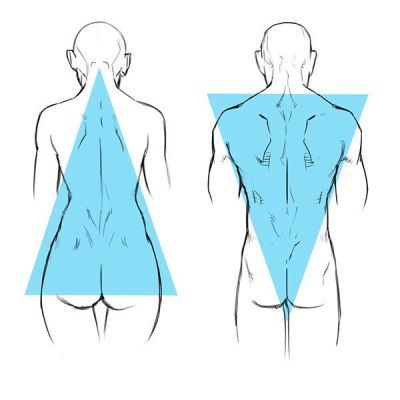
From a simple observation of anatomy it's quite obvious who's Yin and who's Yang.
Men are generally taller than women, broader shoulders and rib cage which aloud them to have a deeper and louder voice. the muscle mass is also higher with less body fat. The sexual organ is external and I don't need to go in detail on how it erects and projects to accomplish its mission... Also the limbs and the hips are straight. the pelvis is narrow, brow bone more proeminent.
Women in contrary are in general smaller than men. With a tendency to keep more fat in the lower part, than muscle. narrow shoulder, narrow torso, wider hips and generally curvier limbs : hips, breasts, rounded face, brighter skin, bigger eyes. And of course the sexual organ is internal and everything about pregnancy is hidden inside the darkness of the womb.
In term of character There is a saying that : Men kill you, Women drive you crazy.
Take in a positive light, Men can build new worlds with their hands, and women can help to civilise and heal the world. Would you live in a high tech city where people behave like cavemen? and in reverse would you be with kind and compassionate people in the wild with no protection, no home, no technology, in open air?
A lot of psychology studies has shown that from childhood, girls have a tendency for emotional connexion (networking, relationship) while boys are interested by things (how to built, how to work, how to perform)
But does it mean that a man is 100% yang and a woman 100% yin? No it's absurd. I think you kind of notice I tend to have a yang way of expressing myself. I don't really care if my posts hurt someone's feeling. I don't care about trigger warning, I don't care about politically correctness, I don't write to protect harmony among the group but to express what is in my mind, now. but does it nullify my womanhood card? Does that make me a man? Absolutely not, I just have my own and unique temperament and everyone is different. Yet I'm still deeply Yin. And if we observe humanity as a group, it's obvious that the most enchanting embodiment of Yin energy are Women and the most magnificent embodiment of Yang energy are Men.
Yin/Yang in other aspects
I like this term better than female/masculine because it's less restrictive than just humans. It can apply to many aspect of life
A student is yin when he receive knowledge from his teacher in a yang position.
The same teacher is yin when he's under the authority of the university director yang.
In the military field a samurai has a yang culture while shinobis by acting in shadow and using deception way have a yin way of fighting.
The soul is yin, the body is yang
Moon reflect the sunlight (yin), the sun is the source of light (yang)
A mother is yang toward her children (yin)
In a production the famous actress is yang while producers, and staff are yin (they work in the back sometimes no one know their face or their name). but in the same production who has the actual power? The production pouring the money and writing the script? the famous actress that attract people due to her popularity? The success of the whole film is a mix of both energy.
In the end Yin/Yang both are important and both are complementary. Yin can't live independently from Yang and Yang can't survive without Yin. Light produce shadow and shadow is enhanced by light. You can't appreciate shadow without light and you can't see the beauty of light without shadow.
Part 2 : Yin/Yang in Naruto, the case of Madara and Hashirama
17 notes
·
View notes
Text
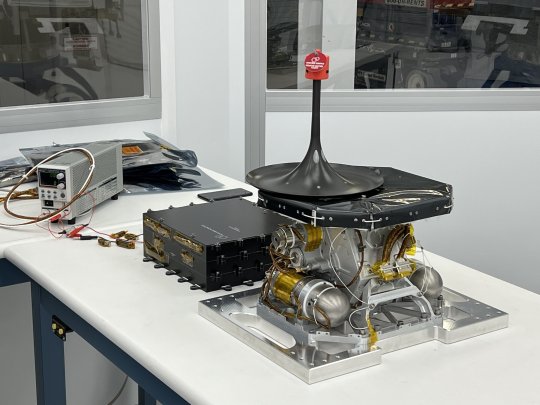
NASA payload aims to probe moon's depths to study heat flow
Earth's nearest neighboring body in the solar system is its moon, yet to date, humans have physically explored just 5% of its surface. It wasn't until 2023—building on Apollo-era data and more detailed studies made in 2011–2012 by NASA's automated GRAIL (Gravity Recovery and Interior Laboratory) mission—that researchers conclusively determined that the moon has a liquid outer core surrounding a solid inner core.
As NASA and its industry partners plan for continued exploration of the moon under Artemis in preparation for future long-duration missions to Mars, improving our understanding of Earth's 4.5-billion-year-old moon will help teams of researchers and astronauts find the safest ways to study and live and work on the lunar surface.
That improved understanding is the primary goal of a state-of-the-art science instrument called LISTER (Lunar Instrumentation for Subsurface Thermal Exploration with Rapidity), 1 of 10 NASA payloads flying aboard the next delivery for the agency's CLPS (Commercial Lunar Payload Services) initiative and set to be carried to the surface by Firefly Aerospace's Blue Ghost 1 lunar lander.
Developed jointly by Texas Tech University in Lubbock and Honeybee Robotics of Altadena, California, LISTER will measure the flow of heat from the moon's interior. Its sophisticated pneumatic drill will penetrate to a depth of 3 meters into the dusty lunar regolith.
Every half-meter it descends, the drilling system will pause and extend a custom-built thermal probe into the lunar regolith. LISTER will measure two different aspects of heat flow: thermal gradient, or the changes in temperature at various depths, and thermal conductivity, or the subsurface material's ability to let heat pass through it.
"By making similar measurements at multiple locations on the lunar surface, we can reconstruct the thermal evolution of the moon," said Dr. Seiichi Nagihara, principal investigator for the mission and a geophysics professor at Texas Tech. "That will permit scientists to retrace the geological processes that shaped the moon from its start as a ball of molten rock, which gradually cooled off by releasing its internal heat into space."
Demonstrating the drill's effectiveness could lead to more innovative drilling capabilities, enabling future exploration of the moon, Mars, and other celestial bodies. The science collected by LISTER aims to contribute to our knowledge of lunar geology, improving our ability to establish a long-term presence on the moon under the Artemis campaign.
Under the CLPS model, NASA is investing in commercial delivery services to the moon to enable industry growth and support long-term lunar exploration. As a primary customer for CLPS deliveries, NASA aims to be one of many customers on future flights. NASA's Marshall Space Flight Center in Huntsville, Alabama, manages the development of 7 of the 10 CLPS payloads carried on Firefly's Blue Ghost lunar lander.
IMAGE: LISTER (Lunar Instrumentation for Subsurface Thermal Exploration with Rapidity) is 1 of 10 payloads flying aboard the next delivery for NASA’s CLPS (Commercial Lunar Payload Services) initiative. The instrument is equipped with a drilling system and thermal probe designed to dig into the lunar surface. Credit: Firefly Aerospace
11 notes
·
View notes
Text

Thermal mass is the ability of a material to absorb, store, and release heat. Used to moderate building temperatures by reducing fluctuations, the concept is crucial in improving energy efficiency. Materials with relatively high thermal mass, such as stone, concrete, rammed earth, and brick, can absorb significant heat during the day and release it slowly when temperatures drop at night, reducing the need for heating and cooling systems. Properties like heat capacity, thermal conductivity, and density are all considered when assessing the thermal mass property of a material.

Whether in Utah, Nevada, or Arizona, arid environments lend themselves well to thermal mass interventions. Through strategic material selection, placement, insulation, and ventilation, designers can use walls and floor slabs in different formats with high thermal mass to contribute to energy efficiency and comfort.

Read on to discover four projects in the desert regions of the United States that utilize thermal mass in their design.
#solarpunk#solar punk#solarpunk aesthetic#sustainable architecture#united states#architecture#design
12 notes
·
View notes
Text
Wordplay Wednesday: Conductivity
Conductivity refers to a material's ability to allow electricity or heat to flow through it. Metals tend to be very good conductors. This has to do with the outer shell of electrons and their ability to freely dissociate from the rest of the atom.




Notice that each of these metals have less than 4 valence electrons (electrons in the outer most shell or ring on the diagrams). All of these can easily move and transport an electrical or thermal current.


Silicon and carbon have four valence electrons making them semiconductors. Their valence electrons are a little more tightly bound to the atom making it harder for them to move. Modifications to semiconductor crystal structures can allow them to conduct better.


Elements like oxygen and phosphorous have more than four valence electrons. This binds them tightly to the atom and does allow freedom of movement. We call these insulators.

To get an electrical current, electrons need somewhere to move. Many simple experiments use copper and zinc because they are neighbors on the periodic table with copper being slightly more electronegative than zinc (it really wants zinc's electrons). Electrons flow from negative to positive while the electrical current flows from positive to negative.

Things change about for nonmetals when it comes to heat conduction because it has less to do with valence electrons and more to do with the vibrations of the atomic lattice. This typically means that they conduct better at higher temperatures (unless they are high-quality crystal). Diamonds are some of the best thermal conductors out there because of their highly ordered crystal structure. However, it is an electrical insulator.

Heat moves in one of three ways: conduction, convection, or radiation. Conduction is the transfer of heat from a warmer material to a cooler one.

Convection is the movement of heat through a fluid (liquid or gas).

Radiation is heat energy transferred through electromagnetic waves.

That's all for now on conductivity. Tomorrow starts our new topic: Igneous Rocks. Tune in to learn about a famous igneous petrologist who revolutionized the study of igneous rocks. Fossilize you later!
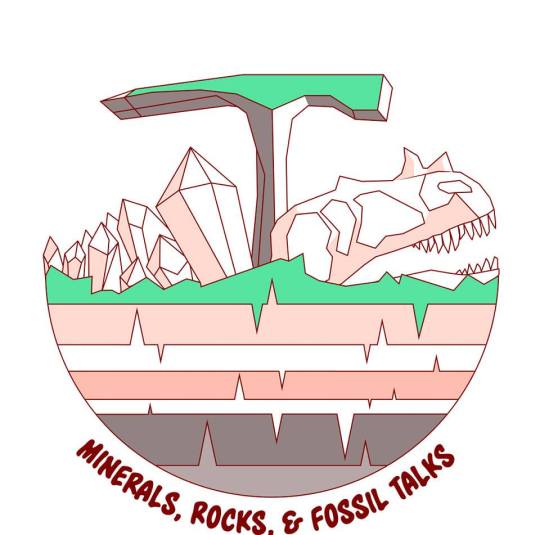
#fun facts#geology#science#science education#mineralogy#metals#nonmetals#conductivity#electricity#heat energy#chemistry
9 notes
·
View notes
Note
Wow dinner looked delish, mate! You cooked that?! Without burning down the flat? please add the recipe, much appreciated!
Hello.
Certainly! Here's the recipe.
Objective:
Cook a layered seafood dish by applying heat to induce the Maillard reaction, soften vegetables, and cook the seafood through controlled thermal conduction.
Materials:
- Olive oil (approx. 2 tbsp, depending on pan surface area)
- Green and yellow bell peppers (100g each, diced to ~1cm³ for even heat distribution)
- Onion (1 medium, ~150g, diced)
- Garlic (2 cloves, crushed, to release allicin compounds)
- Plantain (1 large, sliced into ~0.5 cm-thick discs for even cooking)
- Cod fish chunks (200g, cut into uniform pieces to ensure even cooking, ~3cm³)
- Shrimps (200g, peeled and deveined)
- Lime (1 unit, juiced, containing citric acid to enhance flavour and denature proteins)
- Chilli flakes (~1 tsp, source of capsaicin for heat)
- Parsley (~1 tbsp, finely chopped, optional for garnish and flavour)
- Salt (~1 tsp, NaCl, for seasoning and osmotic balance)
Procedure:
1. Initial Heat Transfer:
Add olive oil (a heat-stable lipid) to a pan over medium heat. The goal is to raise the oil's temperature to around 180°C (its smoke point) to facilitate heat transfer to the ingredients without burning.
2. Vegetable Sautéing:
Introduce diced bell peppers, onions, and crushed garlic into the heated oil. The purpose here is to soften the cell walls of the vegetables through thermal conduction, releasing their natural sugars and enhancing flavour. The crushed garlic will begin to release allicin, contributing to aromatic compounds.
- Time: ~5 minutes, or until onions are translucent (indicating sufficient moisture loss and softening)
3. Plantain Layering:
Layer sliced plantain over the vegetables. Plantain contains starch that will soften and caramelise due to heat, while its sugars will brown slightly on the pan-facing side through the Maillard reaction.
4. Seafood Addition:
Place cod chunks and shrimp on top of the plantain layer. The cod and shrimp contain proteins, which denature at temperatures between 40°C and 60°C, causing them to firm up and cook through.
5. Acid and Seasoning Integration:
Pour lime juice over the seafood. The citric acid in the lime will begin to denature surface proteins. This enhances the texture and flavour of the seafood. Add chilli flakes for capsaicin (providing heat) and parsley for herbaceous notes.
6. Simmering Phase:
Lower the heat and cover the pan. Allow the contents to simmer gently. The purpose of this phase is to cook the seafood thoroughly (internal temperature of shrimp should reach 63°C, cod 60°C), while allowing the flavours of the layers to meld through diffusion.
-Time: Simmer for ~8-10 minutes, or until seafood is opaque and firm
7. Final Assessment:
Verify that the seafood has reached its ideal doneness (shrimp turns pink, cod flakes easily). Adjust seasoning if necessary before serving.
Outcome:
A balanced dish where the natural sweetness of the vegetables and plantain complements the tender seafood, with bright acidity and controlled heat from the chilli flakes.
Rosamund and I didn't set fire to the apartment (just a dish towel got singed).
SH
11 notes
·
View notes
Text
A group of scientists led by Kongu Engineering College in India investigated the use of waste neem oil as a cooling solution for PV modules. Neem oil is extracted from the seeds of the neem tree and is commonly used as a medicine for some skin diseases.
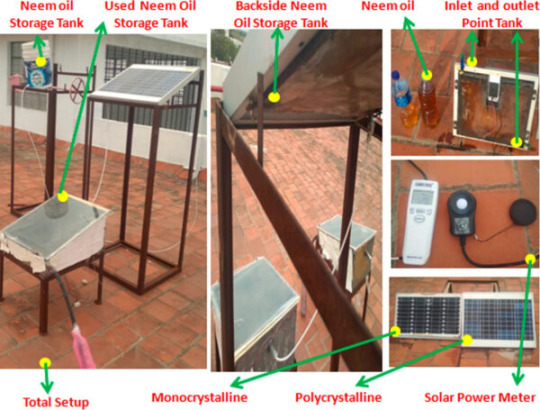
The researchers explained that this oil acts like phase-changing materials (PCMs), which can absorb, store, and release large amounts of latent heat over defined temperature ranges. PCMs have often been used at the research level for PV module cooling and the storage of heat.
“The neem oil has a good thermal range, is physically high in density, is chemically stable and noncorrosive, is environmentally pollution-free, reusable, and recyclable, and is economically low-cost and easy to dispose of,” they added. “Commonly, any PCM used for cooling purposes should have low thermal conductivity, stability, and cycling. The neem oil has fulfilled all the limitations.”
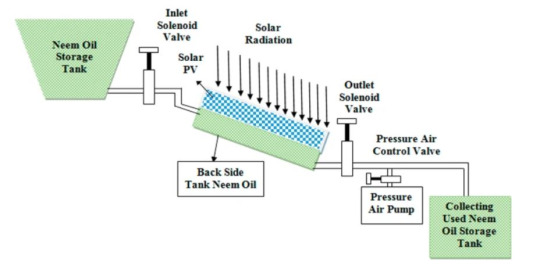
9 notes
·
View notes